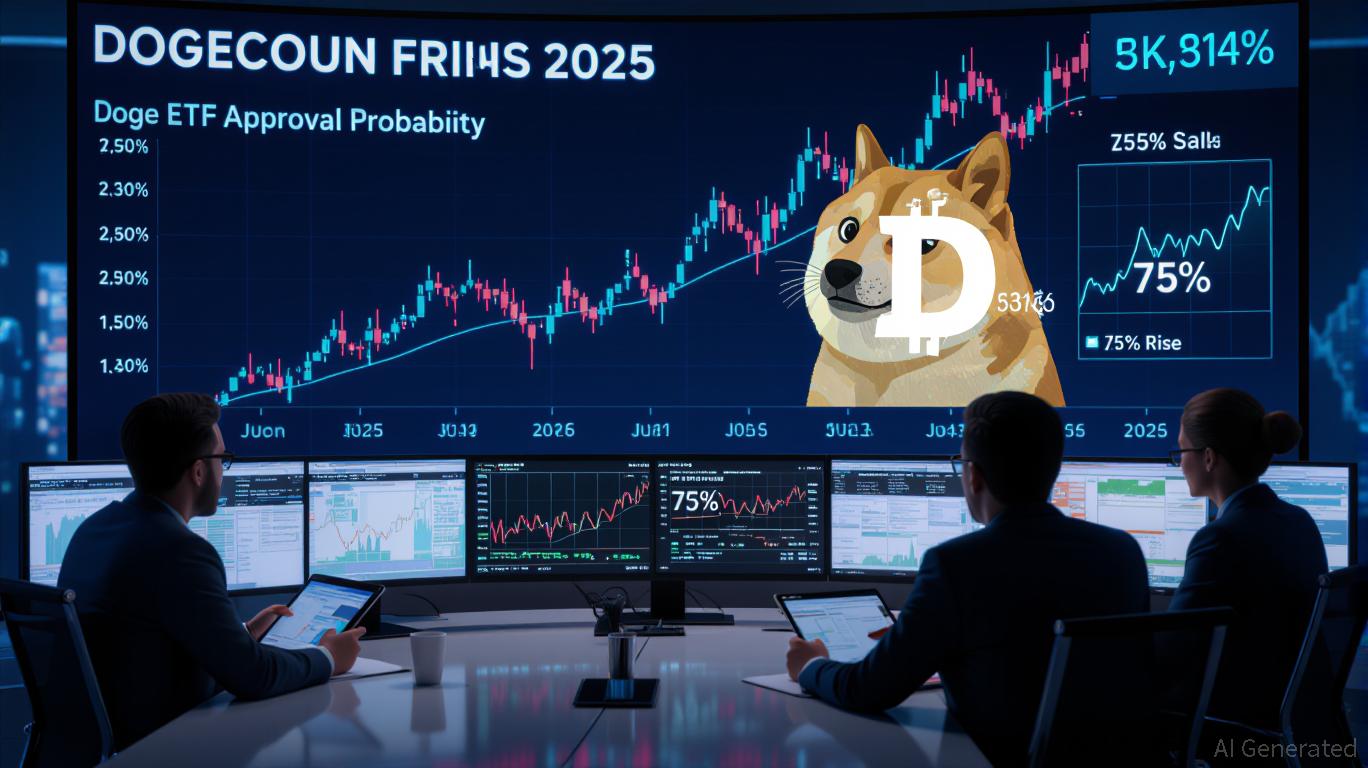
The Dogecoin (DOGE) ETF debate has become a microcosm of the broader crypto-ETF frenzy, with institutional momentum and retail speculation colliding in a high-stakes regulatory limbo. As the U.S. Securities and Exchange Commission (SEC) prolongs its review of multiple DOGE ETF applications, investors are left to weigh whether this meme coin’s potential as a crypto gateway is a legitimate opportunity or a speculative trap.
Regulatory Gridlock and the 240-Day Clock
The SEC’s handling of DOGE ETF proposals—submitted by Bitwise, Grayscale, 21Shares, and Rex-Osprey—has followed a familiar pattern: delays, extensions, and a refusal to commit. As of August 2025, the agency has pushed final decisions to October 2025–January 2026, leveraging its full 240-day review period. This mirrors the recent Litecoin ETF saga, where the SEC’s indecision created a ripple effect across the altcoin market. The agency’s insistence on public feedback and “thorough evaluation” has done little to quell speculation about its true stance.
Prediction markets, however, tell a different story. Polymarket now prices DOGE ETF approval at 75%, up sharply from 38% in January 2025. This optimism is fueled by the SEC’s February 2025 clarification that meme coins like DOGE are not securities—a move that, while temporary, has reduced legal ambiguity. Yet the lack of a unified framework between the SEC and CFTC means enforcement risks remain.
Institutional Momentum vs. Retail Frenzy
The institutional case for DOGE ETFs is compelling. Bitwise’s formal filing, confirmed as legitimate by the Delaware Department of State, signals a shift toward mainstream acceptance. Rex-Osprey and 21Shares have followed suit, betting that DOGE’s massive retail following can be monetized through structured products. The rescission of SEC Staff Accounting Bulletin 121 (SAB 121) in January 2025—a rule that previously barred banks from crypto custody—has further lowered barriers for institutional entry.
Retail speculation, meanwhile, has been turbocharged by Elon Musk’s D.O.G.E. agency briefly displaying the Dogecoin logo in early 2025. Though the logo was removed, the symbolic endorsement sent DOGE’s price surging to a $51.98 billion market cap. This “Musk effect” has amplified retail participation, with traders viewing DOGE as a proxy for broader crypto adoption. However, the asset’s 337% 24-hour drop in late August 2025 underscores the fragility of such hype-driven momentum.
The ETF Paradox: Legitimacy or Liquidity Trap?
If approved, a DOGE ETF could replicate the $50 billion inflow seen with Bitcoin ETFs in 2024. Institutional investors, drawn by DOGE’s low cost and viral appeal, might treat it as a “crypto lite”—a low-risk on-ramp to digital assets. Yet this logic assumes the SEC’s eventual approval, which is far from guaranteed. Rejection would likely trigger a sell-off, as seen with unapproved altcoin ETFs in the past.
The EU’s Markets in Crypto-Assets (MiCA) regulation and the UK’s FCA framework offer contrasting models. While MiCA emphasizes transparency, the UK’s approach balances innovation with anti-money laundering (AML) rigor. These divergent strategies highlight the global regulatory fragmentation that complicates DOGE’s path to legitimacy.
Actionable Insights for Investors
For risk-tolerant investors, a small position in DOGE ETFs could serve as a speculative bet on regulatory approval and retail-driven demand. However, the asset’s volatility and regulatory uncertainty make it unsuitable for long-term portfolios. Conservative investors should wait for clarity—either through an SEC ruling or a broader institutional framework.
Key Takeaways:
1. Short-Term Play: If the SEC approves DOGE ETFs by October 2025, expect a surge in liquidity and price. Position accordingly, but cap exposure to 1–2% of a diversified portfolio.
2. Long-Term Caution: DOGE’s lack of intrinsic value and regulatory ambiguity make it a high-risk proposition. Prioritize Bitcoin and Ethereum ETFs for foundational crypto exposure.
3. Monitor Global Frameworks: Track MiCA and FCA developments, as cross-border regulatory alignment could influence DOGE’s institutional adoption.
In the end, the DOGE ETF saga reflects the broader tension between innovation and oversight in crypto. Whether it becomes a gateway or a cautionary tale depends not on the coin itself, but on the SEC’s next move.
